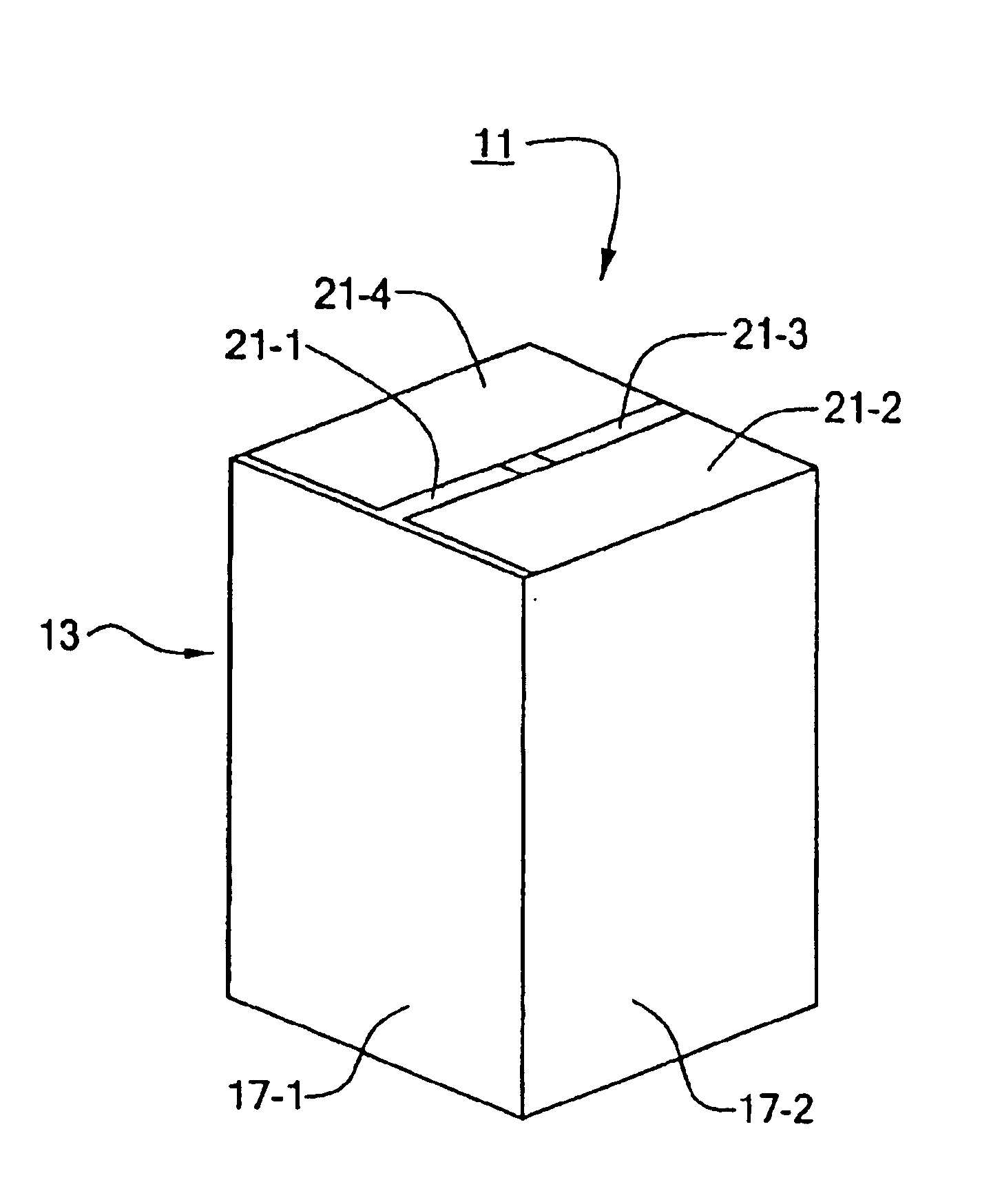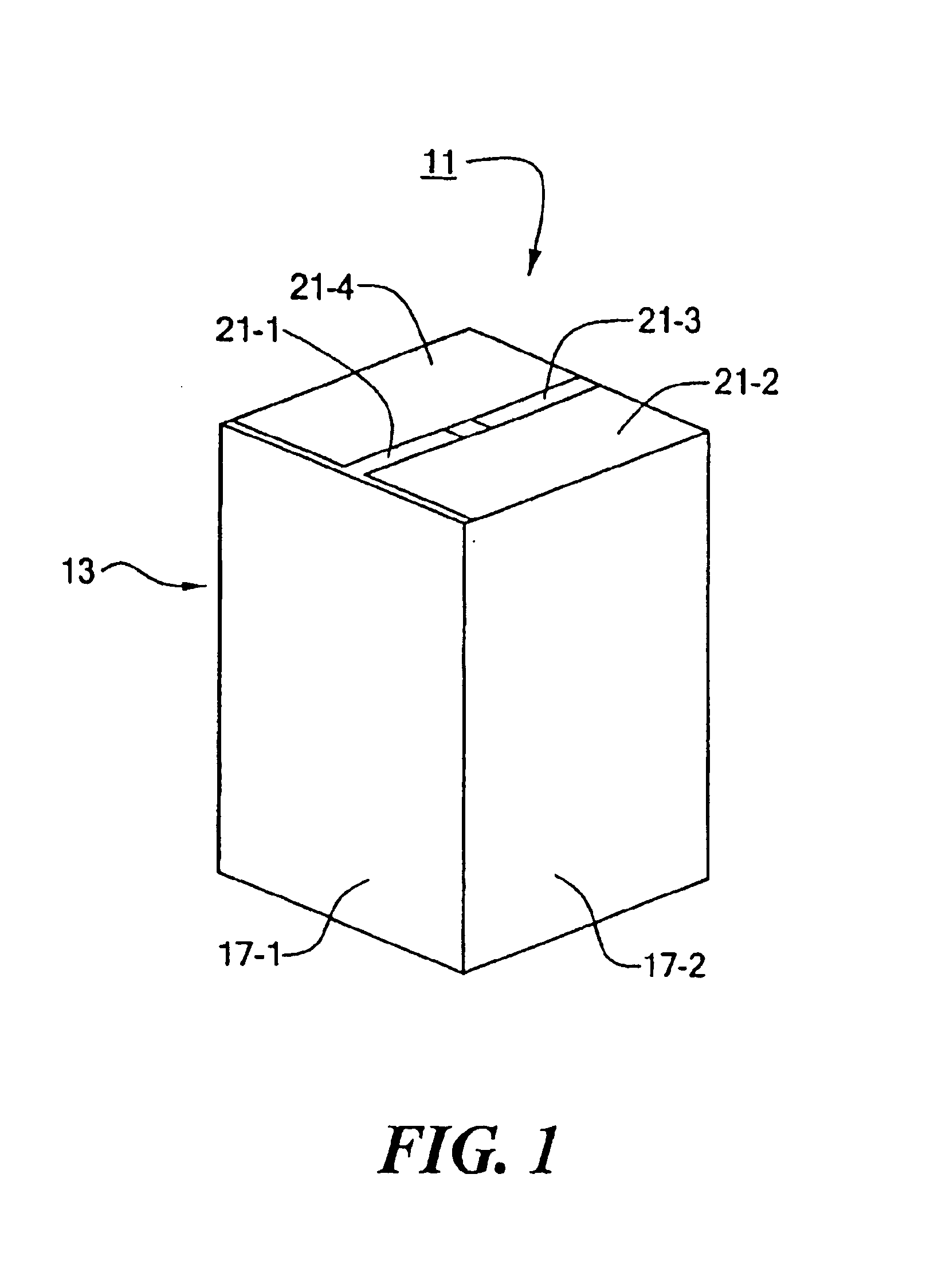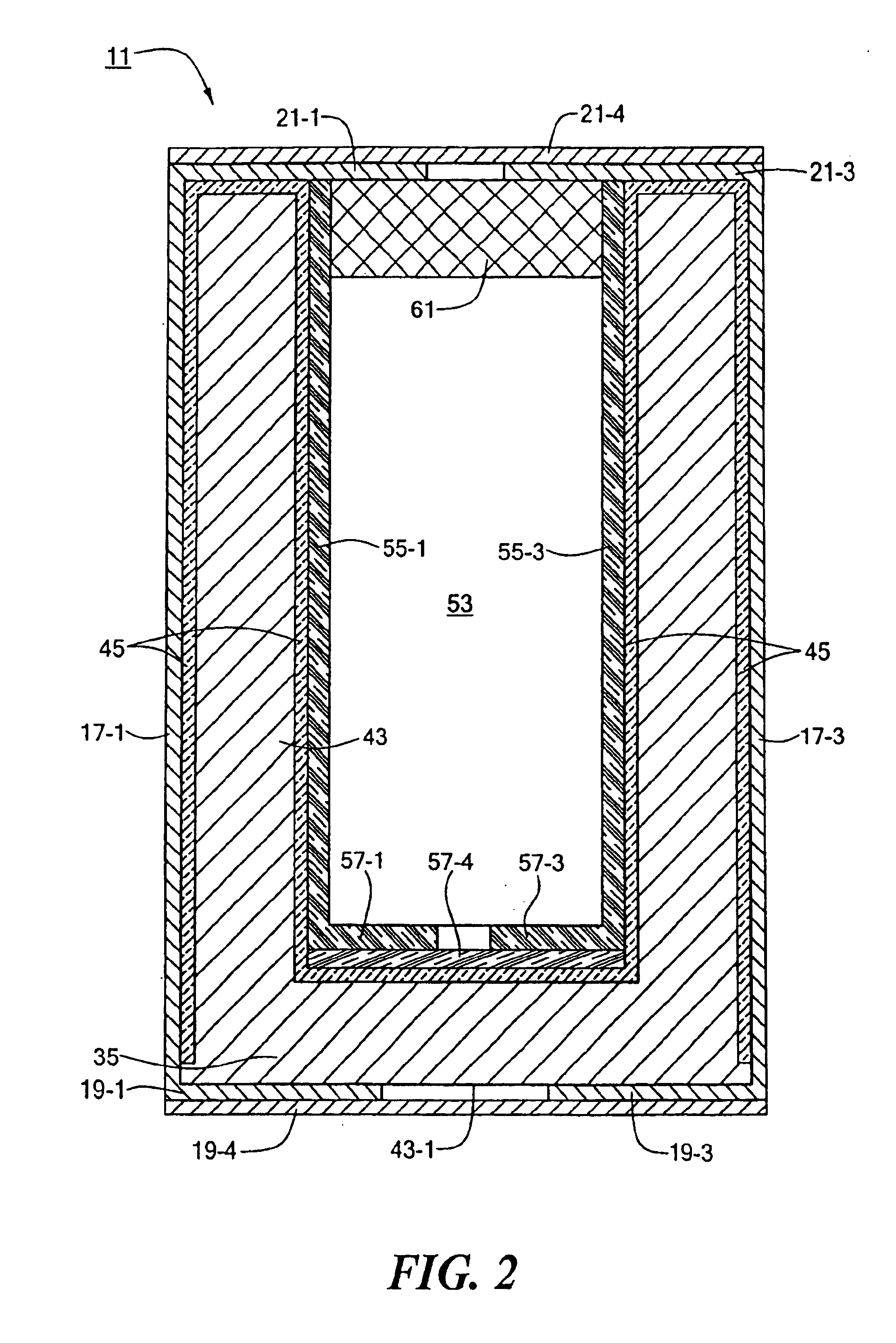Insulated shipping container and method of making the same
a shipping container and insulation technology, applied in the field of insulated shipping containers, can solve the problems of inability to replace in such a way, boxes would be seriously distorted or destroyed by foam pressure, and materials of containers are not recyclabl
- Summary
- Abstract
- Description
- Claims
- Application Information
AI Technical Summary
Problems solved by technology
Method used
Image
Examples
first embodiment
Referring now to FIGS. 1 through 3, there are shown various views of an insulated shipping container constructed according to the teachings of the present invention, said insulated shipping container being represented generally by reference numeral 11.
Container 11 comprises an outer box 13. Outer box 13, which is preferably a corrugated fiberboard or corrugated plastic box and which may be conventional in construction, comprises a rectangular prismatic cavity 15 bounded by a plurality of rectangular side walls 17-1 through 17-4, a plurality of bottom closure flaps 19-1 and 19-4, and a plurality of top closure flaps 21-1 through 21-4. Adhesive strips of tape or other adhesive means (not shown) may be used to retain in a closed condition bottom closure flaps 19-1 through 19-4 and top closure flaps 21-1 through 21-4.
Referring now to FIGS. 2 and 3, container 11 also comprises an insulated insert 31, insert 31 being slidably removably disposed within cavity 15 of box 13. Insert 31, the d...
second embodiment
Referring now to FIG. 7, there is shown a longitudinal section view of an insulated shipping container constructed according to the teachings of the present invention, said insulated shipping container being represented generally by reference numeral 101.
Container 101 is similar in many respects to container 11, the principal differences between the two containers being that bag 45 of container 11 is replaced with a sheet 103 in container 101, sheet 103 being secured to inner box 51 with strips of adhesive tape (not shown).
Referring now to FIG. 8, there is shown a bag 111 used to form sheet 103. As can be seen, bag 111 is virtually identical to bag 45, the only difference between the two bags being that bag 111 is additionally provided with a plurality of perforations 113 peripherally arranged at an intermediate location thereof. Bag 111 is used much like bag 45 and is mounted over a box 51 which has previously been mounted over the plug member of a forming machine, such as machine ...
PUM
 Login to View More
Login to View More Abstract
Description
Claims
Application Information
 Login to View More
Login to View More - R&D
- Intellectual Property
- Life Sciences
- Materials
- Tech Scout
- Unparalleled Data Quality
- Higher Quality Content
- 60% Fewer Hallucinations
Browse by: Latest US Patents, China's latest patents, Technical Efficacy Thesaurus, Application Domain, Technology Topic, Popular Technical Reports.
© 2025 PatSnap. All rights reserved.Legal|Privacy policy|Modern Slavery Act Transparency Statement|Sitemap|About US| Contact US: help@patsnap.com



